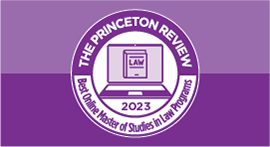Getting into a top law school is no mean feat. Develop a strategic approach and attack the law school application process full-force. This includes:
- Prepping for and taking the LSAT
- Registering for CAS
- Submitting transcripts and letters of recommendation
- Searching for law schools
- Applying to law schools
Many law schools employ a rolling admissions process that heavily favors candidates who submit their applications as early as possible. You should aim to submit all of your applications, regardless of deadlines, by late November or early December, if not earlier. Ideally, give yourself about a year, starting in January, to complete all the necessary steps.

Applying to Law School
1. Prep for the LSAT
LSAT Prep Timeline
The LSAT registration deadline is about a month in advance of each test date.
- January: Take a free LSAT practice test to calculate your diagnostic score.
- February : Start thinking about an LSAT prep course (we strongly recommend in-person or online courses).
- March : Check upcoming LSAT test dates , registration deadlines, and the logistical information you'll need to know for the big day.
Click here for a list of Online JD Programs offering enhanced flexibility and affordability.
2. Register for CAS
The Credential Assembly Service (CAS) is a service provided by the LSAC and is required by most ABA-approved law schools. For a fee, CAS will assemble a report containing your transcript, LSAT scores , and letters of recommendation. After you apply to the law schools of your choice, they will contact the CAS directly and request a copy of your report.
- July: Aim to register for the CAS around July so that you can complete your file as soon as possible.
3. Submit your transcripts and letters of recommendation to CAS
- August: Contact your colleges to ask that your transcript be sent to the CAS.
- September: Consider which professors know you well enough to offer solid predictions (and positive impressions) for your future performance. Ask for recommendation in September, when professors are getting back in the swing of things.
4. Search for Law Schools
Check out school stats to find out where your GPA and test scores will fit comfortably within the application pool.Your best bet is to apply to a mix of reach, match, and safety schools.
- August: Touch base with your prelaw advisor and settle on a mix of schools. Use our law school search tool to narrow your list of schools based on location, specialty, and other factors that are important to you.
5. Apply to Law Schools
While your law school application will be relatively straightforward to complete, your personal statement will most definitely benefit from careful ruminations and multiple revisions. Ask some people who know you well—and have good critical eyes—to read your personal statement to make sure that it communicates your character. Admissions officers will appreciate a clear indication of what attracted you to law and what particular field interests you.
- September: Start working on your law school applications and personal statements around September.
- November: Aim to submit all your law school applications, regardless of official deadline, by late November or early December.
How will you score?
Take a LSAT practice test with us under the same conditions as the real thing. You'll get a personalized score report highlighting your strengths and areas of improvement.
Explore Graduate Programs for You
Explore our featured graduate schools & programs to find those that both match your interests and are looking for students like you.
Best Online JD Programs
Online JD programs offer flexibility, affordability, access to innovative technologies, students from a diversity of career backgrounds, and global opportunities.
Best Online MSL Programs
Master of Studies in Law (MSL) programs are for non-lawyers whose careers in their organizations will benefit from legal training even though they are not required to be practicing attorneys.

Find MBA Programs Matched to Your Interests
Explore our featured business schools to find those that are looking for students like you.





